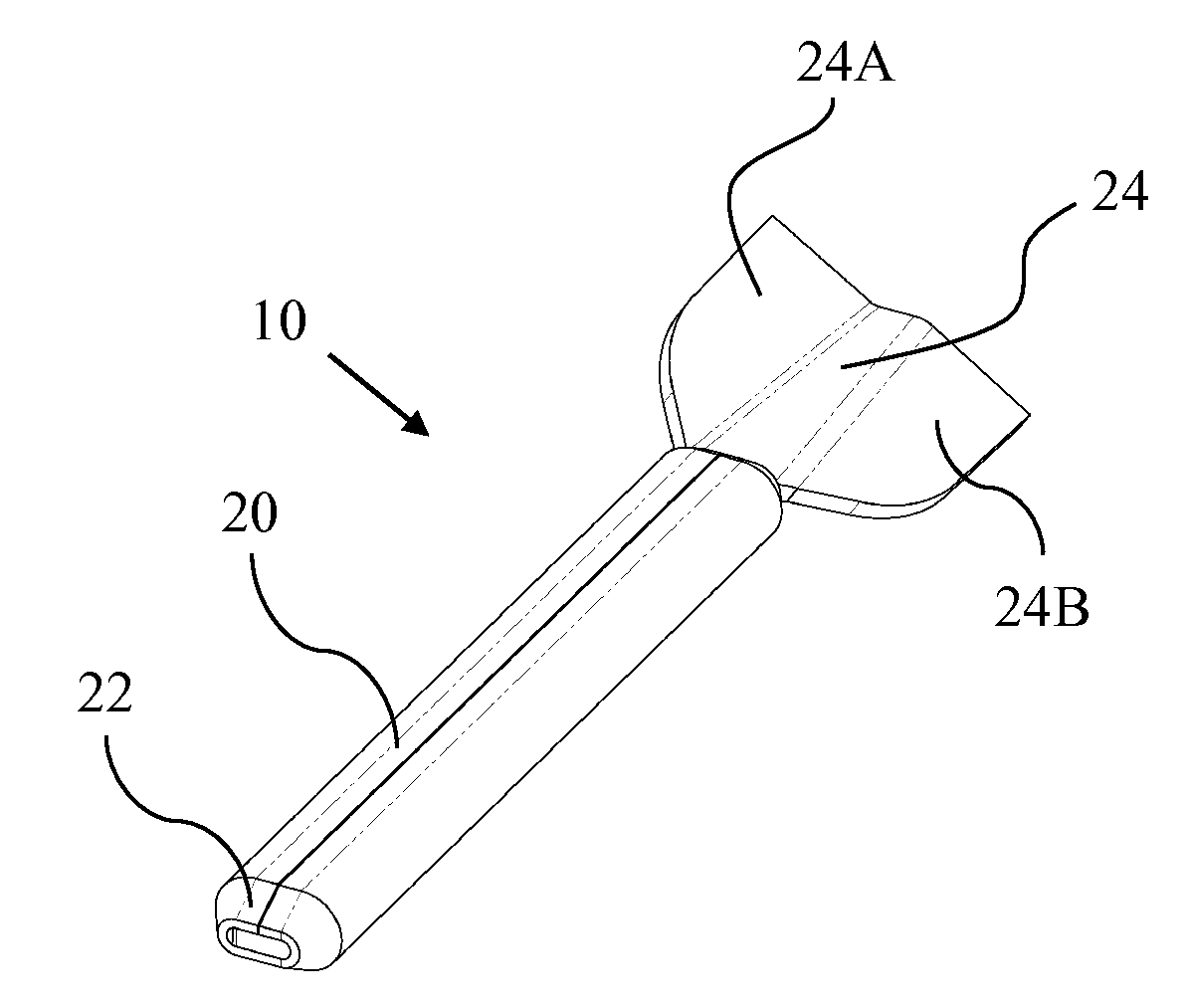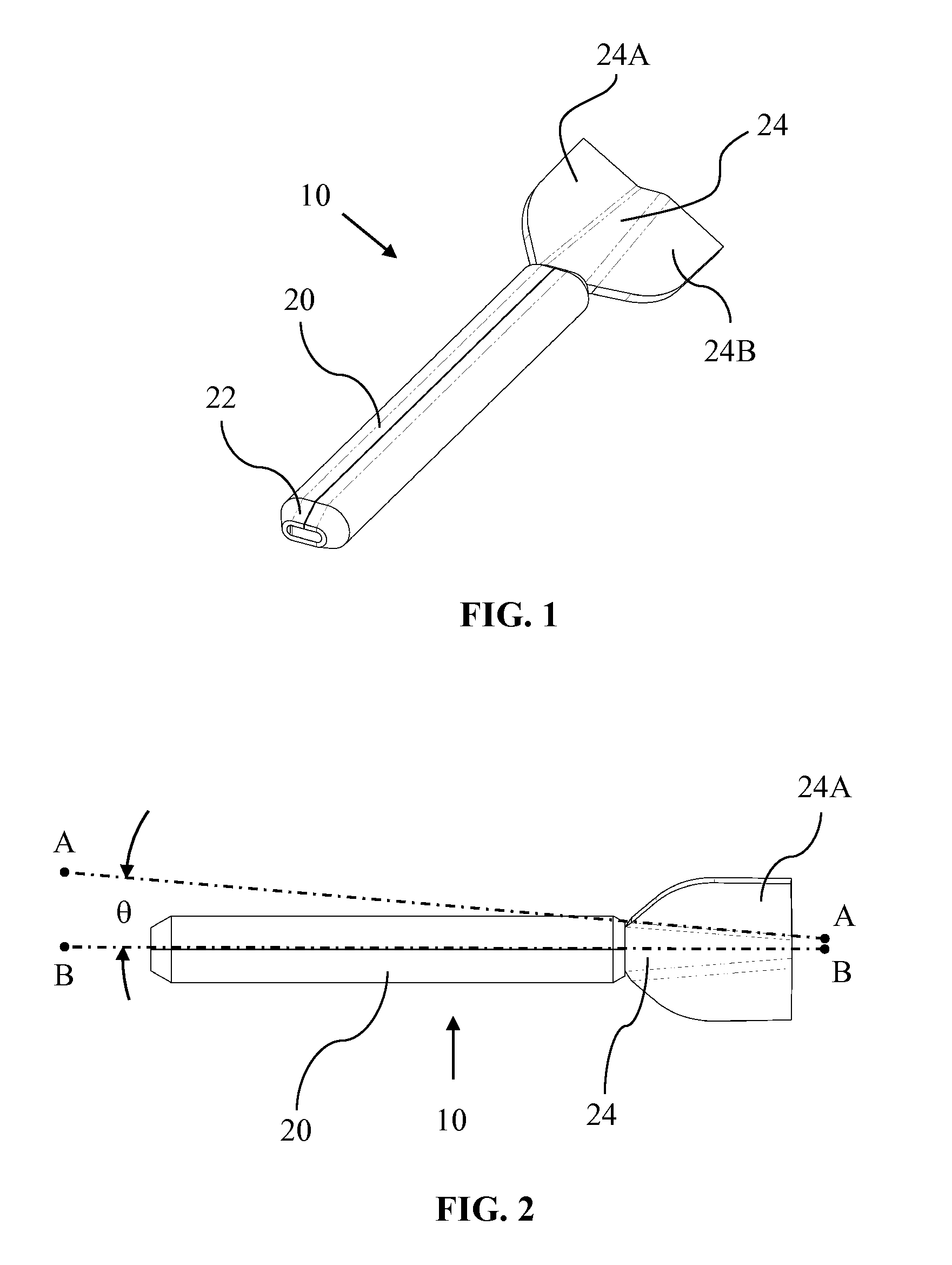Two-Fin Stackable Flechette Having Two-Piece Construction
a technology of two-piece construction and stackable flechettes, which is applied in the field of stackable flechettes or dartlike projectiles, can solve the problems of suboptimal flight characteristics of conventional flechettes, loss of significant portions of velocity and lethality, etc., and achieves optimal packing density, effective stacking, and maintain effective flight performance.
- Summary
- Abstract
- Description
- Claims
- Application Information
AI Technical Summary
Benefits of technology
Problems solved by technology
Method used
Image
Examples
Embodiment Construction
[0030]With reference to FIG. 1, the flechette 10 of the present invention has a forward body 20 which has a substantially rectangular box-like shape, with the forward body 20 having a front tip or nose 22. The forward body 20 is connected to a tail section 24 with the tail section 24 having two integrally connected tailfins or fins 24A, 24B located at the aft of the flechette 10. Both fins 24A, 24B are arranged so as to form a compound angularity which is represented by a longitudinal angle θ and a radial angle Φ (FIGS. 2 and 3).
[0031]In FIG. 2, angle θ is understood as being that angle formed by dotted lines AA and BB. Line AA represents the bend axis where the tailfin 24A adjoins the flat portion of the tail section 24 and line BB represents the longitudinal center line of the flechette 10. In a flight-tested prototype of the present invention, the angle θ measured 4.5 degrees.
[0032]With reference to FIG. 3, a radial angle Φ is formed by axis line CC and line DD. Line DD is coline...
PUM
 Login to View More
Login to View More Abstract
Description
Claims
Application Information
 Login to View More
Login to View More - R&D
- Intellectual Property
- Life Sciences
- Materials
- Tech Scout
- Unparalleled Data Quality
- Higher Quality Content
- 60% Fewer Hallucinations
Browse by: Latest US Patents, China's latest patents, Technical Efficacy Thesaurus, Application Domain, Technology Topic, Popular Technical Reports.
© 2025 PatSnap. All rights reserved.Legal|Privacy policy|Modern Slavery Act Transparency Statement|Sitemap|About US| Contact US: help@patsnap.com



